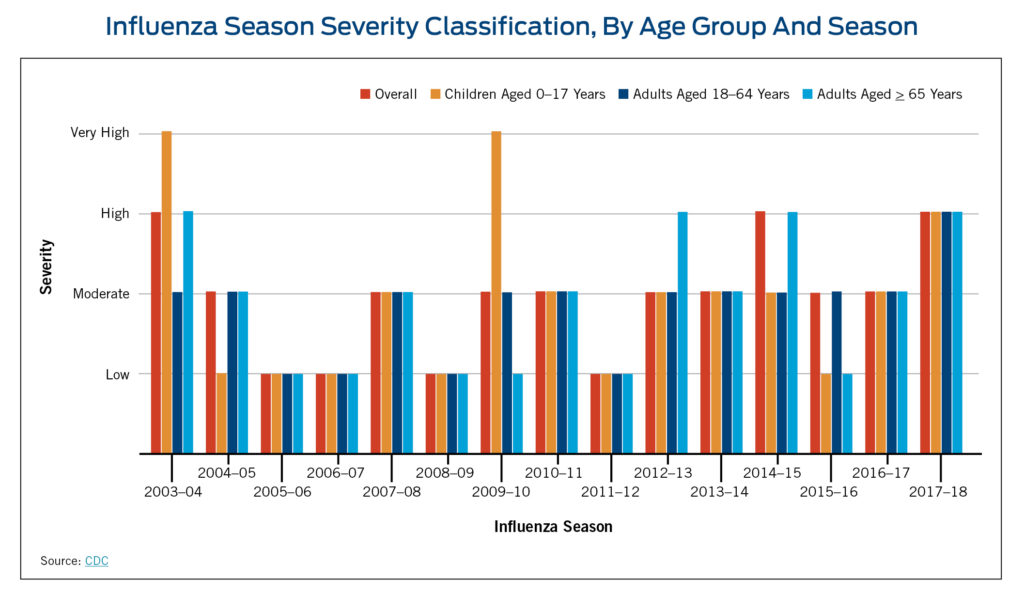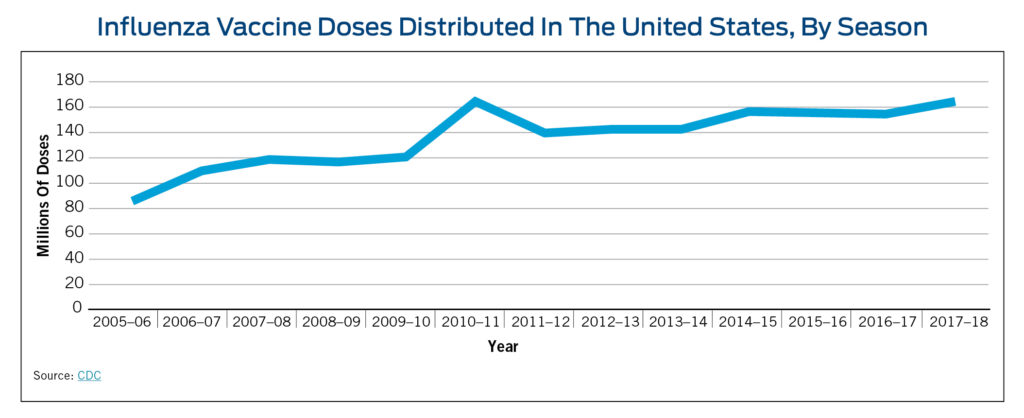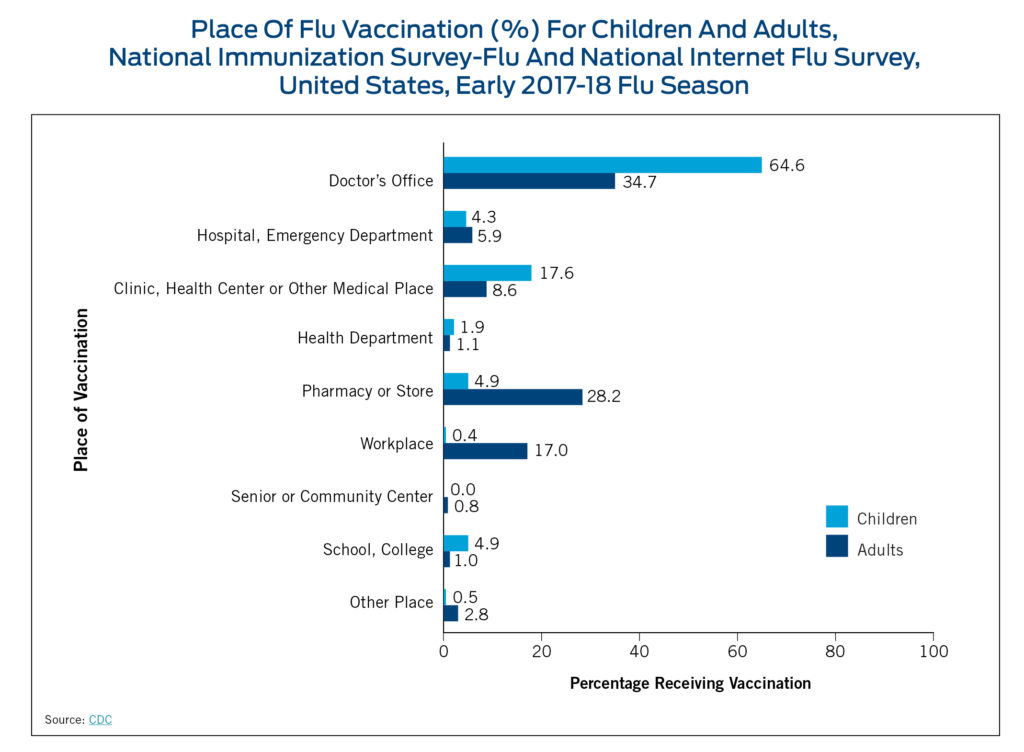HIDA Government Affairs Update
By Linda Rouse O’Neill, Vice President, Government Affairs
The 2017-18 flu season was one of the worst in recent memory, with more than 700,000 hospitalizations. The Centers for Disease Control and Prevention has warned the public to prepare for another potentially bad flu season this year.
For the 2018-19 season, manufacturers are stepping up vaccine production. The Advisory Committee on Immunization Practices (ACIP) has also reversed its position held for the previous two seasons on the nasal spray vaccine and has endorsed its use for some cases. Physician offices remain the most popular location for consumers to receive vaccines, although more people are getting the flu shot at pharmacies or stores.
HIDA just released its annual Influenza Vaccine Production & Distribution Market Brief. In addition to covering the above developments, the report contains projections for this year’s flu season, distributors’ perspectives, and a look at data from the 2017-18 season. Here are a few key insights from the report:
Children were hit especially hard by last year’s flu. Only the 2003-04 and 2009-10 flu seasons were more severe for children, based on data review dating back to 2003. Last year’s flu season was also the first time all three age groups monitored for the disease were classified as “high severity.” The severity of the flu season surprised many experts, and even prompted Congress to examine the country’s readiness.
Manufacturers predict increase in vaccine production. Manufacturers predict between 163 million and 168 million doses of flu vaccine will be produced for the 2018-19 flu season. They expected to produce between 151 million and 166 million last year. As of May 3 of this year, manufacturers report having shipped approximately 155.3 million doses of flu vaccine.
Pharmacies and stores see uptick in flu vaccinations. The share of adults receiving the flu vaccine at pharmacies or stores was 28.2 percent in 2017, up from 24.3 percent in 2016. The doctor’s office remains the most popular location to receive the flu shot, with 64.6 percent of children and 34.7 percent of adults receiving the vaccine in this setting.
Place Of Flu Vaccination (%) For Children And Adults
Changes to quality reporting offer an opportunity to suppliers. As part of its annual Medicare reimbursement update, the Centers for Medicare and Medicaid Services has included influenza immunization as a measure for several providers’ quality reporting programs. If providers fail to report on these measures, their Medicare payments may be cut. While this provides an opportunity for distributors who carry the flu vaccine and related supplies, the Trump Administration’s efforts to reduce regulatory burdens may remove immunization measures from some providers’ reporting in the future.
The insights contained in the 2018 report cover demand trends and useful customer information. HIDA will continue to monitor vaccine and medical product demand as part of its efforts to strengthen the healthcare supply chain and foster effective responses to infectious disease.
To download your copy of the flu report, visit www.HIDA.org/FluBrief. Feel free to contact us at HIDAGovAffairs@HIDA.org if you have any questions or would like more information.



